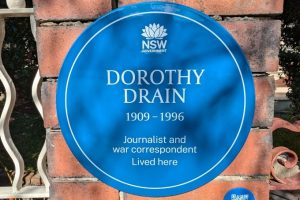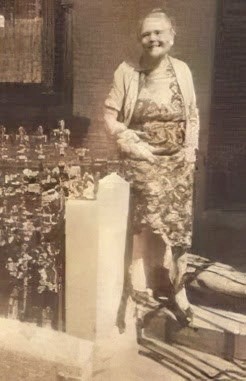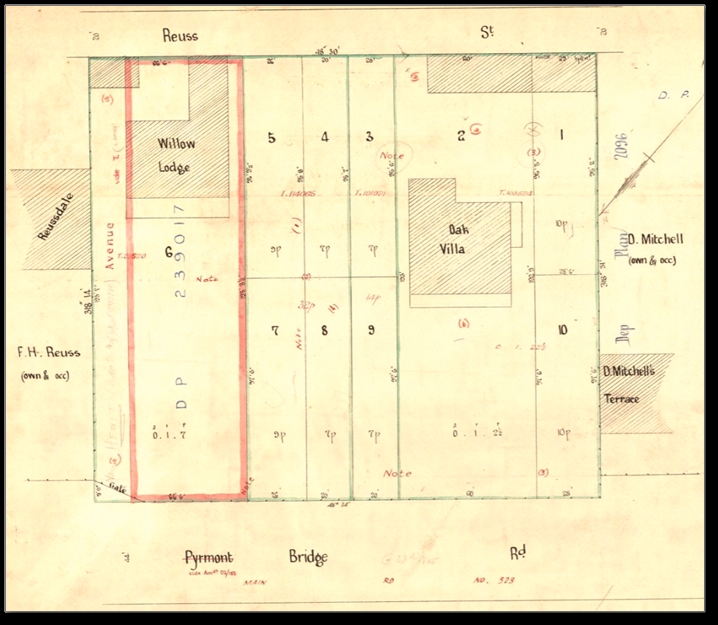Heritage Subcommittee, Bulletin 7/2024, September
Membership

Subcommittee members in 2024 are Lyn Collingwood, Rodney Hammett, Lydia Bushell, Allan Hogan, Ian Stephenson, Robert Hannan, Margaret Cody, Margaret Sankey, Caroline Lipovsky, Ted McKeown and Jude Paul. The committee meets from 7 pm to 9 pm on the first Monday of the month. Any Glebe Society member who shares our passion for Glebe and Forest Lodge’s history and the preservation and enhancement of our heritage is welcome to join us.
The Subcommittee’s primary interests include: 1. the impact and application of local and State heritage controls regarding our suburbs’ heritage; 2. documenting the history of Glebe and Forest Lodge; and 3. Informing Glebe Society members and the wider community about our heritage and history and supporting them to engage in protecting and enhancing Glebe and Forest Lodge’s heritage values.
Development applications
In the past year, 115 DAs for projects in Glebe and Forest Lodge were lodged with Council. Each week, Rodney reviews new DAs on the City of Sydney website for heritage issues that may be inconsistent with City of Sydney’s heritage controls and requirements. These requirements are outlined in Section 3 of the City of Sydney’s Development Control Plan 2012 and aim to ensure that significant heritage issues are appropriately managed and respected by new development, including alterations to existing property. These guidelines by no means preclude change but outline appropriate responses to a site’s context, constraints and opportunities.
If the site is in a heritage conservation area, a heritage impact statement (HIS) is required and is meant to be prepared by a suitably qualified firm. This is managed by the applicant. The Heritage Subcommittee and other Glebe Society members are concerned that these HISs are not sufficiently independent and that their content can – on occasions – be too closely aligned to the objectives of the applicant. Sometimes, details in HISs are incorrect or misleading, a fact only identified after the Society’s detailed review of DA documentation. This matter is an ongoing discussion with Council.
Rodney circulates a weekly summary to members of the Heritage Subcommittee, identifying any specific issue to be raised with the Planning Convenor for further advice and potential action on behalf of the Society. Members are encouraged to write their own submissions if they are concerned about a proposed development.
Community engagement
Enquiries from the public come to the Heritage Subcommittee via the heritage@glebesociety.org.au and history@glebesociety.org.au email addresses, and increasingly, comments left on heritage-related website posts. In the main, Rodney and Lyn deal with these enquiries, most of which are from people researching their family histories.
In the past year, we have answered more than 35 questions. Some were easy to answer: Where is Bay Street? Where was Lyndhurst? Others were more difficult: What was the text (now obliterated) on the foundation stone of St Ita’s church? Do you have pictures of the original Glebe Hotel (now Badde Manors)? Was a bomb shelter ever built in Leichhardt Street?
One request related to the current whereabouts of a painting once owned by the architect James Barnet. The enquirer, a researcher of Victorian natural history, hoped to compare this artwork with another of the same rural scene. After being sent details of Barnet’s many descendants, the enquirer concluded that finding where the painting ended up was probably too Herculean a task.

We had a request from Scotland from a descendant of William Eatock (1869-1943) asking for more information about his Aboriginal ancestor, the husband of Lucy Eatock (a Blue Plaque nominee). The enquirer was sent a family tree, links to other family members and William’s physical description from a Government Gazette.
Another person wanted to know the location of Hillcrest. In 1904 a child fell from one of the house’s upper windows and was taken to the nearby Children’s Hospital where she died. Lyn sent a photo of the house (today’s 180 Glebe Point Road) plus information on its inhabitants, including war service records. The enquirer responded that the mystery about a missing branch of family history had now been solved.
Rodney answered an enquiry from a woman looking for information about a family member who had been an inmate of the Sydney Female Mission Home in Glebe in the early 1900s. After some research, he determined that the home had been located at Willow Lodge in Pyrmont Bridge Road and then at Bayview at the northern end of Glebe Point Road. Rodney wrote a story about this published in Bulletin 10/2023 and on our website.

Contributions to the Bulletin
Each issue of the Bulletin in the past year contained a mystery photo of Glebe-Forest Lodge inviting members to identify the location or event. Lyn’s regular Who lived in your street? included articles on buildings now neglected, the ‘alphabet houses’ 433-445 Glebe Point Road and the history of Grose Street, a once vibrant residential thoroughfare now reduced to a featureless alleyway. Parts of the article on the history of St Helens were reproduced in Signals, the newsletter of radio station 2RPH which operates from a building on the site. Rodney provides stories on a variety of historical aspects of Glebe and Forest Lodge.
Blue Plaques
More stories of Glebe people and places nominated by the Society for a Blue Plaque appeared in the Bulletin. These included 21 Ross Street where the Newsletter Printery published the Communist Party’s Tribune, and the John Verge mansion Lyndhurst at 61 Darghan Street which was saved from demolition for an expressway proposed by the NSW Premier Robin Askin (another nominee – he grew up at 29 Talfourd Street and 11 Lyndhurst Street). Also proposed were Minerva Terrace on Wigram Road, the boyhood home of tennis player and coach Harry Hopman, and Calmar at 128 Glebe Point Road designed by architect Edmund Blacket.
Our nomination of Dorothy Drain’s house at 52 Toxteth Road was approved. Dorothy Drain (1909-96) was a journalist, war correspondent and editor of the Australian Women’s Weekly. Our first successful Blue Plaque nominee was 266 Glebe Point Road, once the home of cricketer ‘Tibby’ Cotter.
Blue Plaques NSW recently announced a second round of nominations. The category has been extended to include events. Lyn Collingwood and Ian Stephenson submitted the following:
- 73 -75 Westmoreland Street, Elsie Women’s Refuge (also under consideration as a listing on the State Heritage Register).
- 148 St Johns Road, the home of activist Lucy Eatock.
- 12 Reuss Street, the home of cartoonist Les Tanner. (The date of his death made him ineligible for nomination last time but the criteria have changed).
- Glebe Town Hall, scene of the 1932 Dole Riots.
When nominations closed, Blue Plaques NSW advised that over 150 nominations had been received and that they were keen to see photos of people in front of the plaques, admiring the Government’s handiwork: heritagemailbox@environment.nsw.gov.au.








There are no comments yet. Please leave yours.